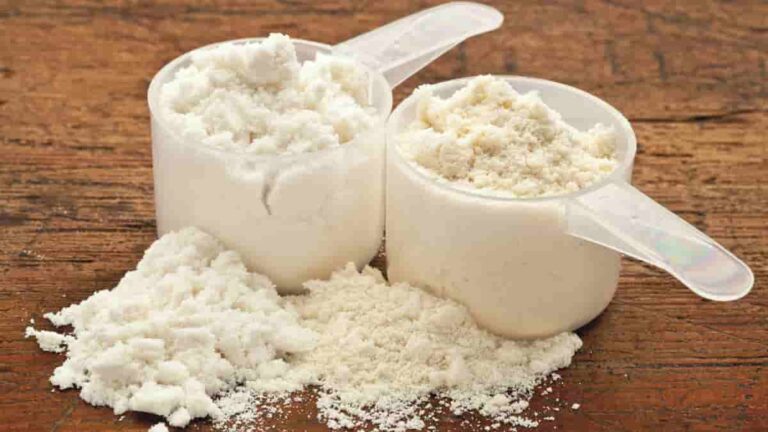Project Report For Casein Manufacturing
Introduction
Project report for Casein Manufacturing is as follows.
Casein is the most abundant protein in cow and buffalo milk, accounting for around 80% of total protein content, with whey or serum proteins accounting for the remaining 20%.
Casein is a phospho-protein combination present in milk to the level of roughly 3%. It includes all of the common amino acids as well as a high concentration of the important ones.
At pH 7.0, the caseins Alpha, beta, gamma, and K are in decreasing mobility order. Commercial casein is produced from skim milk using one of two primary methods: acid precipitation or rennet coagulation.
Project Report Sample On
Casein Manufacturing
Get Completely Custom Bankable Project Report
Casein may be manufactured in a variety of grades for a variety of uses by precipitating it from skimmed milk with dilute Sulphuric acid, Hydrochloric acid, or Lactic acid. Lactic acid or Lactic Casein Casein is a byproduct of natural self-souring, which is typically aided by inoculating skin milk lactobacillus.
Paints, paper coatings, paper cones, adhesives, rubber chemicals, leather, textile auxiliaries, and medicines all utilise it. Rennet Casein is created by the Rennet process, which is precipitated by the enzyme Rennet.

Casein is a protein found in milk that is used as a binding agent in a variety of foods. It belongs to a class of proteins known as phosphor proteins, which are collections of proteins coupled to anything containing phosphoric acid. Casein is also known as caseinogen in some European cuisine.
Casein is a calcium salt, which means it has no net ionic charge. It possesses a variety of intriguing features that make it helpful in dishes and cookery. One of the main lines of argument used to promote a raw food diet is that proteins are healthier if they are not denatured.
Denaturing happens when a protein loses its natural structure, as a result of intense heat or acid, at which time it no longer functions normally. Casein is not sensitive to denaturing due to its structure.
Market Potential Of Casein Manufacturing
Expenses

Product Cost Breakup

Reveneue Vs Expenses

Market Trend

India is the world’s largest milk producer. Milk production is increasing at a pace of 4% each year. However, the government intends to increase milk output by 2022 by using scientific animal husbandry practices, improved cow feed, and enhanced veterinary services.
This will improve the supply of milk, which may then be processed into goods such as casein. Because of the increased expansion of the food processing industries and speciality chemicals, the application and demand for casein are increasing at a quicker rate.
Casein has a large and promising market. The global market for casein is expected to exceed US$ 1 billion in sales by 2026, as per projections for the period 2016-2026. By 2026, the global micellar casein market is expected to grow at a 5.9 percent CAGR.
Skim milk is used to make rennet casein and other forms of casein after being pasteurised at 72 °C for 15 – 20 seconds. Small levels of fat are bad for the quality. As a result, it is critical that the milk has been separated efficiently.
Renneting is accomplished with the aid of the enzyme chymosin found in rennet. The milk is heated briefly before being chilled to around 30 °C. The rennet is then added. After 15–20 minutes, a gel develops. It is chopped, and the coagulum is swirled while being heated to around 60 °C. The enzyme must be deactivated at a high temperature. Cooking time is around 30 minutes.
